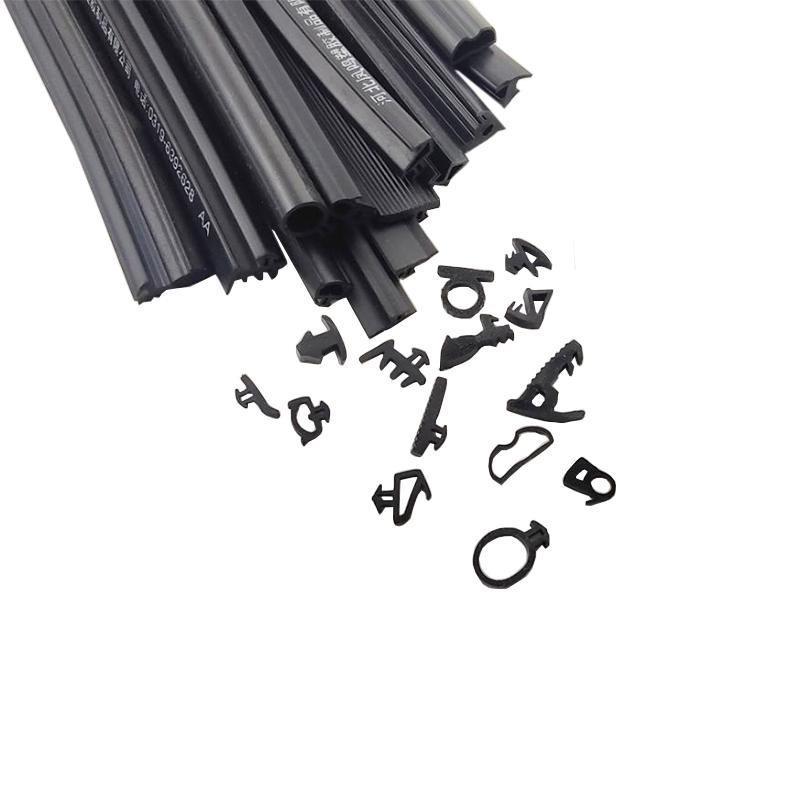What Makes a Sealing Strip Durable?
2025-09-05

What Makes a Sealing Strip Durable?
A durable sealing strip must excel in **weather resistance** and **mechanical properties** to maintain its seal over time under various environmental stresses. The key factors are material, design, and manufacturing quality.
**1. Material: The Most Critical Factor**
The choice of material is the primary determinant of a seal's lifespan.
**🏆 Top Choice: EPDM (Ethylene Propylene Diene Monomer) Rubber**
* **Why it's durable:**
* **Excellent Weather Resistance:** Its saturated polymer backbone is highly resistant to ozone, UV radiation (sunlight), and extreme temperatures (from -50°C to +150°C). It won't crack, harden, or become brittle easily.
* **Good Chemical Resistance:** Resists water, steam, acids, alkalis, and common cleaning agents.
* **Outstanding Compression Set Resistance:** It returns to its original shape after prolonged compression, ensuring the seal doesn't become permanently deformed.
* **Best For:** **Automotive doors/windows, building doors/windows, and any outdoor application** exposed to the elements.
**🔥 High-Temp/Specialty Choice: Silicone Rubber**
* **Why it's durable:**
* **Extreme Temperature Range** (from -60°C to +200°C+): It performs exceptionally well in high-heat environments with minimal degradation.
* **Excellent Weather & Ozone Resistance:** Similar to EPDM in this regard.
* **Non-Toxic & Odorless:** Safe for food and medical applications.
* **Drawback:** Generally has **lower tear and abrasion strength** than EPDM and is more expensive.
* **Best For:** **Appliances (ovens, microwaves), medical devices, HVAC systems,** and high-temperature industrial uses.
**💡 Cost-Effective Alternative: TPE/TPV (Thermoplastic Elastomer/Vulcanizate)**
* **Why it can be durable:**
* Offers a good balance of flexibility, weather resistance, and recyclability.
* Can be formulated to have properties close to EPDM.
* **Best For:** **Consumer appliances, electronics,** and various industrial products.
**⚠️ Avoid for Critical/Long-Term Outdoor Use: PVC (Polyvinyl Chloride)**
* **Why it's less durable:**
* **Poor Weather Resistance:** Plasticizers can migrate out over time, causing the material to harden, shrink, crack, and become brittle when exposed to sun and temperature cycles.
* **Poor Low-Temperature Performance:** Becomes stiff and loses sealing ability in the cold.
* **Best For:** **Short-term, indoor, or low-cost** applications where long-term durability is not a priority.
---
**2. Design and Structure**
The physical design impacts how well the seal performs and lasts.
* **Solid vs. Sponge (Foam):**
* **Solid Seals:** Are more **abrasion and tear-resistant**. They are durable for dynamic applications with friction (e.g., car windows).
* **Sponge/Foam Seals:** Are softer, provide better compression, and offer superior **sound damping and thermal insulation**. However, the surface is more susceptible to wear and tear.
* **For Durability:** Choose **solid or microcellular** foam for high-wear areas.
* **Metal or Plastic Reinforcement:**
* Many high-quality seals (especially in cars) have an embedded **metal or rigid plastic carrier**.
* **Purpose:** Provides structural integrity, prevents stretching and twisting during installation and use, and greatly enhances overall durability.
---
**3. Manufacturing Quality**
* **Surface Finish:** A high-quality seal has a **smooth, uniform surface** free of flaws, pits, or contamination. A rough surface can attract dirt and is a point where tearing can begin.
* **Consistency:** The material should be consistent in density and color throughout its length.
**How to Choose a Durable Seal: A Quick Guide**
1. **Identify the Application:**
* **Outdoors/Car:** Specify **EPDM**.
* **High Heat/Food Grade:** Specify **Silicone**.
* **Indoors/Appliance:** **TPE** or high-quality **PVC** are options.
2. **Perform Simple Tests:**
* **The Pinch Test:** Squeeze the seal firmly. A durable seal will feel resilient and **spring back to its original shape immediately** with no permanent dent. Slow recovery indicates poor compression set resistance.
* **The Stretch Test:** Gently stretch it. It should feel strong and elastic, returning to its original length without deformation. A poor-quality seal may tear or feel weak.
* **Visual Inspection:** Look for a smooth surface, consistent color, and a well-defined shape.
3. **Smell It:** A strong, unpleasant chemical odor often indicates inferior, non-durable materials.
4. **Ask the Supplier:** Always ask, **"What material is this made from?"** A reputable supplier will know it's EPDM, Silicone, etc.
**Conclusion**
The most durable sealing strip is typically made from **EPDM rubber**, features a **functional design** (often with reinforcement for structural parts), and exhibits **excellent compression recovery** and a **smooth surface finish**. Investing in a high-quality seal made from the right material for the job will save money and effort in the long run by avoiding frequent replacements.







